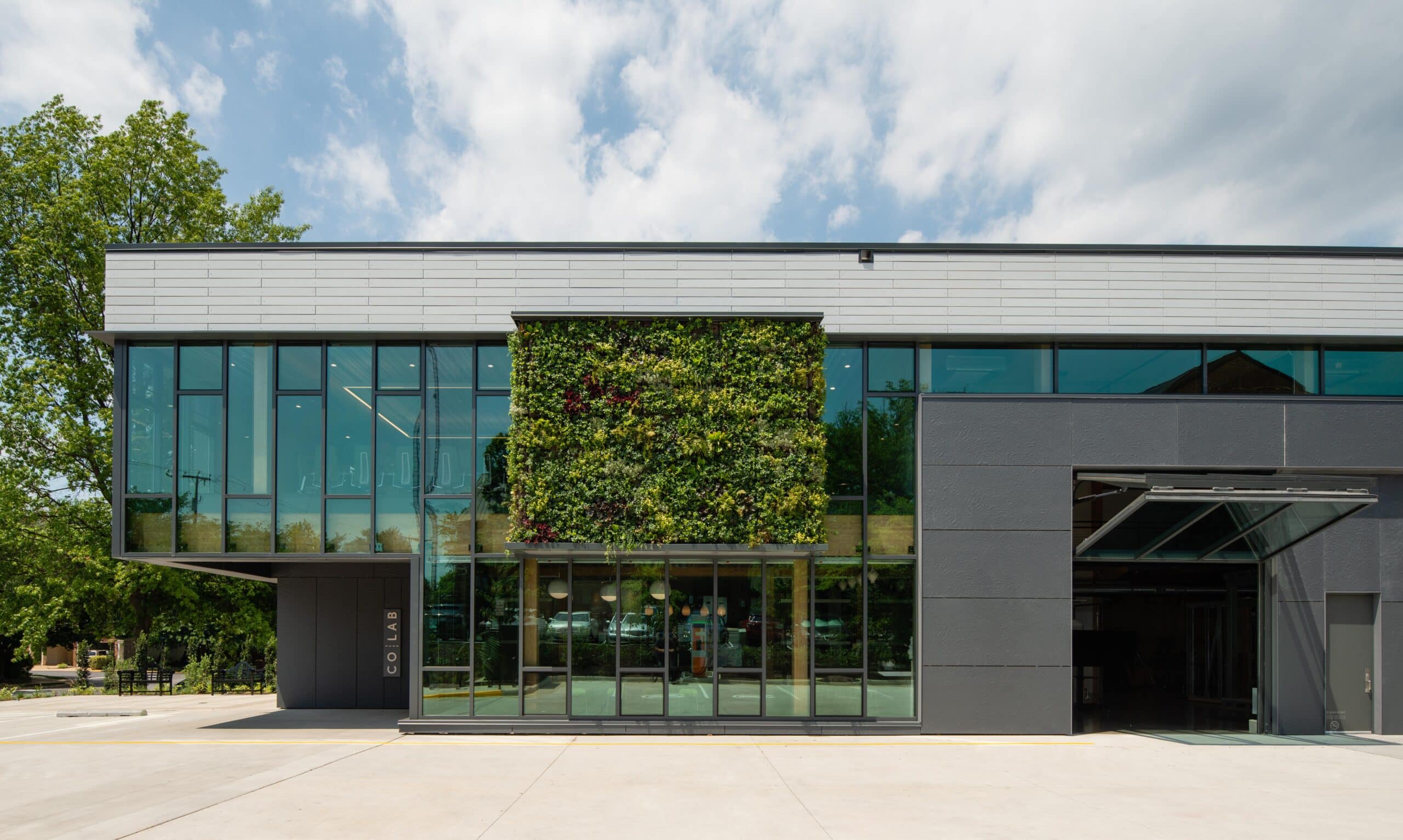
| Jan 11, 2021
Co|Lab: HITT’s Designated Space for Research & Development
Given the type of work we hope to inspire in research and development, HITT opted to design a state-of-the-art facility that merges sustainability and technology. By taking the opportunity to test applications of new workflows and products, the building serves as a living case study for R&D tactics and learnings. Centered around designing for disassembly, healthy materials, and net zero energy operations, Co|Lab’s design has achieved the first LEED v4 BD+C Platinum certification in Virginia, the International Future Living Institute (ILFI) Petal Certification, and is currently striving for net zero energy operations.
As part of the circular economy and a direct result of William McDonough + Partners’ design expertise, designing for disassembly drove the overarching design strategy – how can we design a building or product for its end of use? From the mass timber structure to the modular green wall on the exterior of the building, the final result was a building that included reusable products. A few examples:
- The mass timber structure was delivered and installed by a team of eight people. Without welding or adhesion, it can be taken apart. Prefabrication was a large part of this effort.
- Standard sized cabinetry is used in the kitchenette and lobby, allowing for the products to be repurposed in another building in the future.
Avoiding all “red list” chemicals designated by ILFI, the project team conducted product research to collect ingredient lists from manufacturers and confirm material sourcing requirements. As people across industries are increasingly expecting supply chain transparency – understanding what is in a product or how it’s made – building products are under review, too. The IFLI’s Materials Petal validates the upfront legwork required to achieve this level of due diligence and identify materials that exclude harmful mutagens, carcinogens, and endocrine disruptors. Spending more than 90 percent of our time indoors, building owners and occupants are paying attention to chemical exposure in products. Some examples include:
- Hunter Douglas Heartfelt Ceiling
- TAKTL Rainscreen
- Shaw Carpet
- Copper pipes (instead of PVC)
On-site energy production is also being considered by more building owners and developers, but operating a net zero energy facility can often be different than designed or expected. Developing the right protocols for operating the facility is crucial to ensuring consumption remains where it should in order to support operations, but not waste energy. Selecting the right energy production method (wind, solar, etc.) is a major design milestone, but commissioning, reporting, and maintenance is the follow-on work where so much learning takes place. A few examples include:
- Submetering by process and including the proper metering protocol can enable the right metrics to be collected and reported so facility management teams can ensure proper energy consumption levels across building functions.
- The high-performance envelope and integrated air barrier system has an effective R-value of R-17 to ensure minimal transmission – keeping the cool air in during the summer and out in the winter.
To learn more about Co|Lab, please click here.

